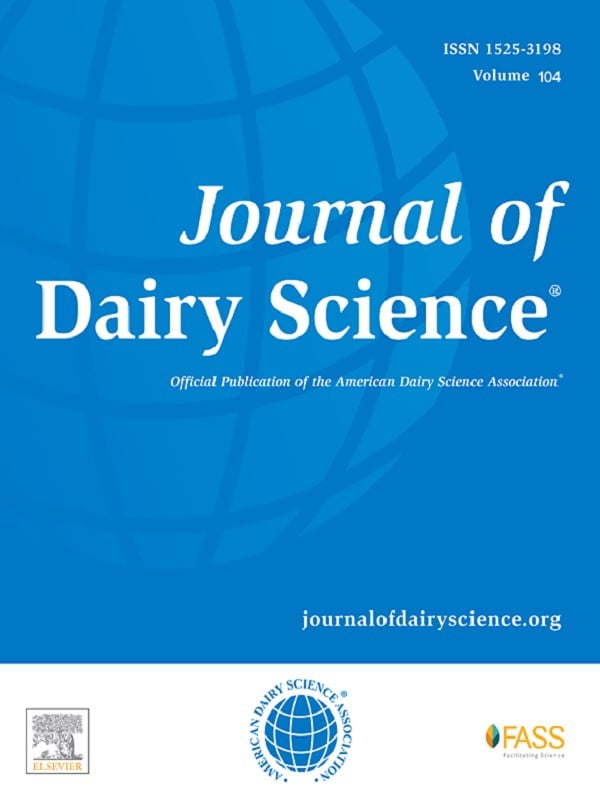Hypertonic milk replacers increase gastrointestinal permeability in healthy dairy calves
J. Dairy Sci. 102:1237–1246

Abstract
Hypertonic milk replacers are commonly used in animal production systems and their effect on the gastrointestinal system of young animals is insufficiently studied. Total lactose inclusion or its partial replacement with dextrose increases intestinal osmotic pressure, which may compromise gastrointestinal barrier function. In this experiment, we investigated the effect of increased osmolality of calf milk replacer (CMR) on gastrointestinal permeability in 30 Holstein Friesian (n = 17) or crossbred (n = 13) bull calves. The osmolality of CMR increased as result of a gradual replacement of lactose by monosaccharides (dextrose and galactose). Calves were acquired from dairy farms that followed a standardized protocol for colostrum management, including 3 feedings of colostrum in the first 24 h. Calves were then transported to the research facility between 0 and 3 d of age, fed a milk replacer with 0% dextrose twice daily for the first 2 wk of age, and subsequently exposed to their respective treatments from 3 until 7 wk of age. Meal size was 3.2 L at 3 wk of age and increased to 3.5 L at 7 wk of age. No solids were provided throughout the study and calves had ad libitum access to water. Treatments included 4 levels of dextrose inclusion (replacing lactose): 0% (L1, n = 5), 13.3% (L2, n = 5), 26.7% (L3, n = 5), and 40% (L4, n = 5) and an additional treatment (G+D, n = 10) that included 20% galactose and 20% dextrose and matched the galactose supply of L1 and the osmolality of L4. Carbohydrates were exchanged based on hexose equivalents. Across treatments, the estimated osmolality ranged from 439 (L1) to 611 mOsm/kg (L4 and G+D). Gastrointestinal permeability was assessed by fractional urinary recovery of indigestible markers (lactulose, d-mannitol, and Cr-EDTA) delivered as a single dose at 3 and 7 wk of age. Marker recoveries were expressed as percentage of oral dose and assessed in 6-h and 24-h quantitative urinary collections. Increasing the osmolality of the CMR linearly increased urinary Cr-EDTA and lactulose recoveries at 3 and 7 wk of age. Lactulose and Cr-EDTA recoveries did not differ between G+D and L4, suggesting that the source of monosaccharide (dextrose and galactose) in CMR had no effect on gastrointestinal permeability. The observed increase in gastrointestinal permeability to large molecules (Cr-EDTA and lactulose) with increased osmolality suggests that hypertonic CMR may compromise gastrointestinal barrier function.